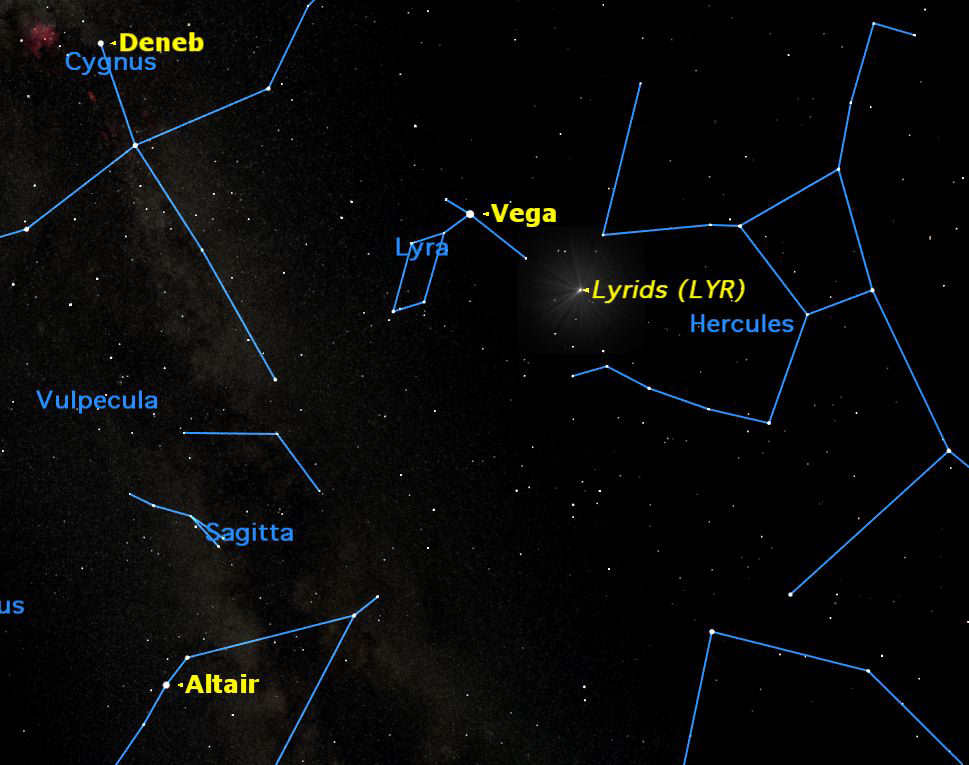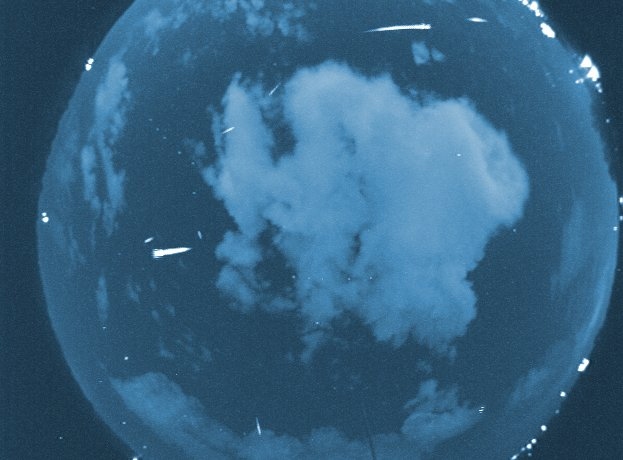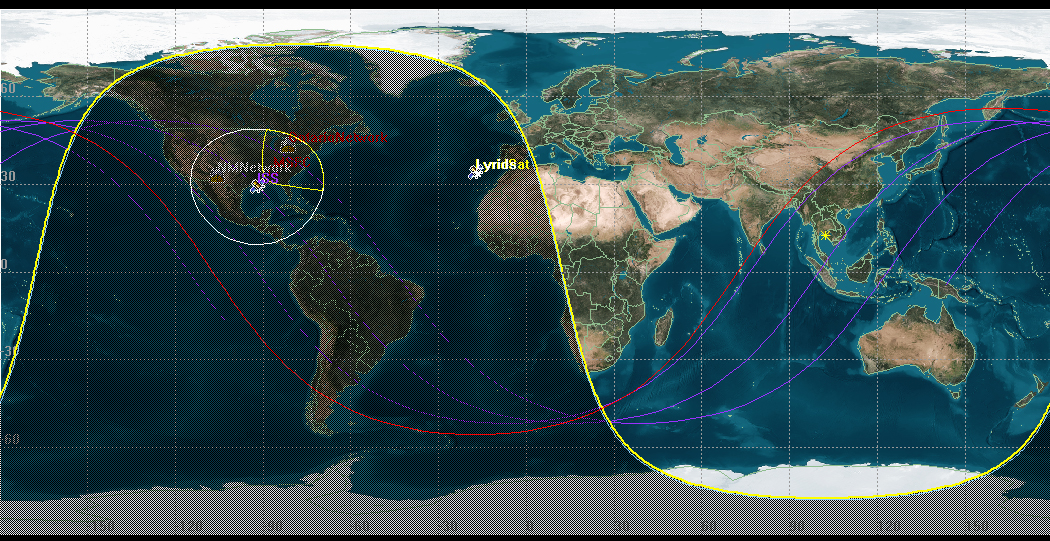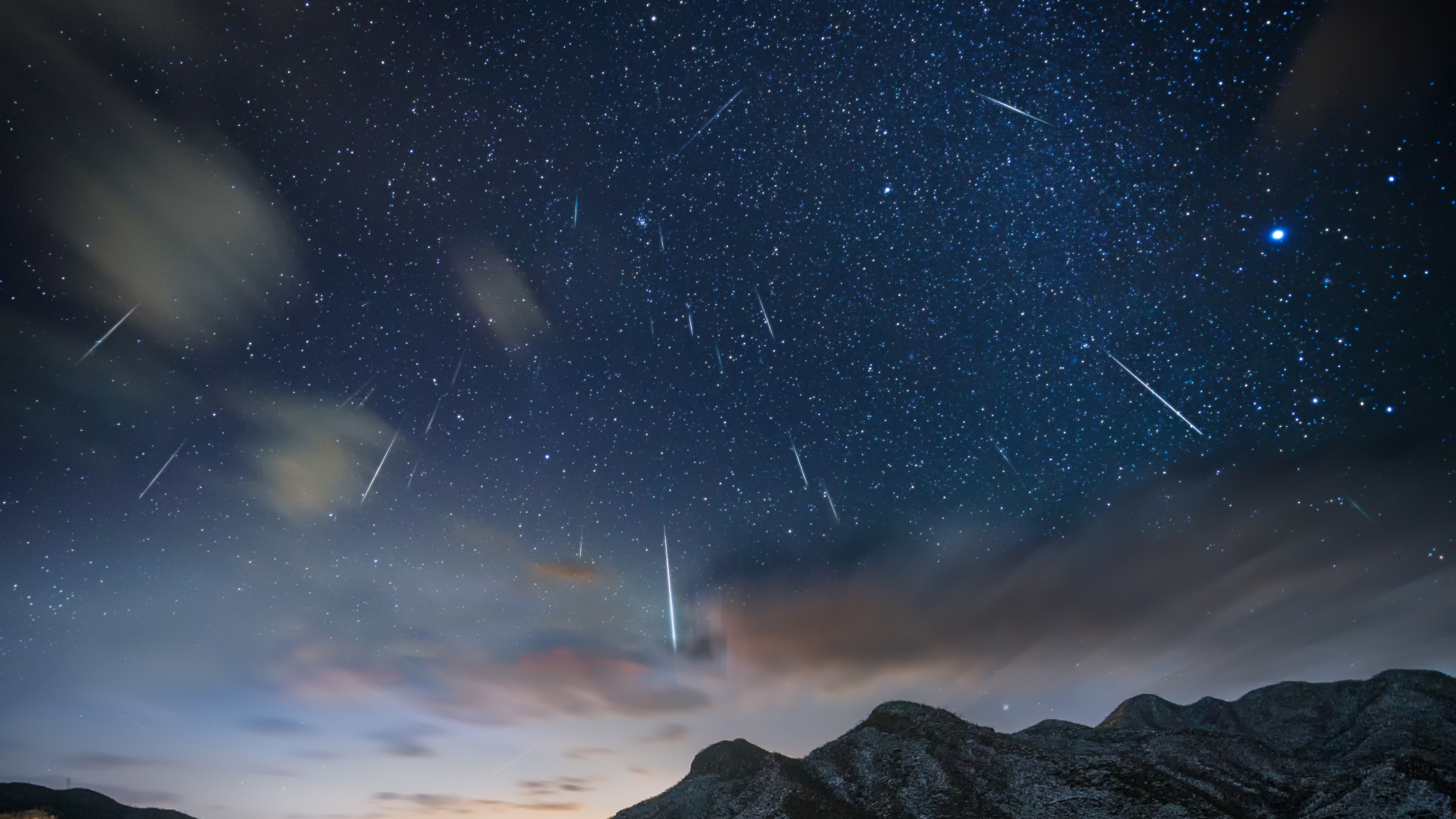Lyrid Meteor Shower Peaks Tonight

Editor's note: for our complete coverage of the 2012 Lyrid meteor shower, visit here: Lyrid Meteor Shower of 2012: A Skywatching Resource
A promising meteor shower will hit its peak tonight, lighting up the late-night sky in what could be an eye-catching end to Earth Day.
NASA scientists predict the annual Lyrid meteor shower, which peaks overnight tonight (April 21) and before dawn Sunday, will offer an impressive sky show to observers with clear weather, largely due to the absent moon.
Meteor shower expert Bill Cooke of NASA told SPACE.com that the moon is currently in its new phase, when the side facing Earth is not illuminated by the sun. That means that unlike last year, when bright moonlight washed out April's annual "shooting stars" display, the 2012 Lyrid meteor shower could be a stand-out event.
"The Lyrids are really unpredictable," Cooke said. "I'm expecting 15 to 20 Lyrid meteors an hour. Back in 1982, they outburst to nearly 100 per hour. You really can't predict with this."
Breaking space news, the latest updates on rocket launches, skywatching events and more!
One thing that's certain, though, is that with a bright moon out of the picture, meteor aficionados graced with clear, dark skies could be in for a weekend skywatching treat. Dark skies well away from city lights are essential for the best meteor shower observing conditions. [Gallery: Sky Maps for 2012 Lyrid Meteor Shower]
Lyrids from space
The Lyrid meteor shower has been observed by humans for more than 2,600 years and occurs when the Earth passes through a stream of dust from the comet Thatcher (C/1861 G1). The comet dust slams into Earth's atmosphere at 110,000 mph (177,027 kph) during the encounter, causing the material to flare up. Comet Thatcher is a long-period comet that orbits the sun once every 415 years.
The Lyrid meteors get their name from the constellation Lyra, which serves as their apparent point of origin in the night sky.
At midnight, between Saturday and Sunday, the constellation Lyra will appear in the northeastern sky. The actual predicted time of peak Lyrid meteor activity is 1:30 a.m. EDT (0530 GMT) on Sunday, Cooke said.
This year, the International Space Station will be flying on a path that may allow astronauts aboard the see the Lyrid meteor shower, Cooke said. His office is coordinating with the astronauts, NASA's network of all-sky meteor cameras across the country and a team of high school and middle school students in California (who hope to snap photos of the Lyrids from the stratosphere using a weather balloon).
How to watch the Lyrid meteor shower
For those of us not flying in space or launching balloons, here are some tips to see the Lyrid meteor shower this weekend:
The first step to preparing for a night of meteor shower watching is to let your eyes adjust to the darkness of night. Cooke said it takes an average of about 40 minutes to acclimatize their eyes to the darkness.
You may be tempted to look straight in the direction of the constellation Lyra to see meteors (they are called the Lyrids, after all), but that's the one thing you should NOT do, Cooke said. Because Lyra is the center of the meteor shower's center (or radiant), the meteors there tend to look like bright dots with short tails.
Meteors that blaze up farther from the radiant's center have longer tails and are more impressive.
"So you don't want to look at Lyra," Cooke said. "You just want to lie on your back and look straight up. Take in as much sky as possible."
Lying directly on the ground, though, can get uncomfortable after awhile. A reclining lawn chair may be more comfortable, and you may find a blanket handy to avoid any nighttime chills.
If your weekend is marred by cloudy or rainy weather, there are still ways to see the Lyrids online.
A live video feed from NASA's all-sky camera network is available here: http://www.nasa.gov/connect/chat/allsky.html
Cook will also host NASA's "Lyrids Up All Night" webchat to discuss the Lyrids as they peak. The webchat starts tonight at 11 p.m. (0300 Sunday GMT), and can be found here:
http://www.nasa.gov/connect/chat/lyrids2012_chat.html
If you snap an amazing photo of the Lyrid meteor shower or other skywatching target and you'd like to share it for a possible story or image gallery, please contact managing editor Tariq Malik at tmalik@space.com.
You can follow SPACE.com Managing Editor Tariq Malik on Twitter @tariqjmalik. Follow SPACE.com for the latest in space science and exploration news on Twitter @Spacedotcom and on Facebook.

Tariq is the award-winning Editor-in-Chief of Space.com and joined the team in 2001. He covers human spaceflight, as well as skywatching and entertainment. He became Space.com's Editor-in-Chief in 2019. Before joining Space.com, Tariq was a staff reporter for The Los Angeles Times covering education and city beats in La Habra, Fullerton and Huntington Beach. He's a recipient of the 2022 Harry Kolcum Award for excellence in space reporting and the 2025 Space Pioneer Award from the National Space Society. He is an Eagle Scout and Space Camp alum with journalism degrees from the USC and NYU. You can find Tariq at Space.com and as the co-host to the This Week In Space podcast on the TWiT network. To see his latest project, you can follow Tariq on Twitter @tariqjmalik.


